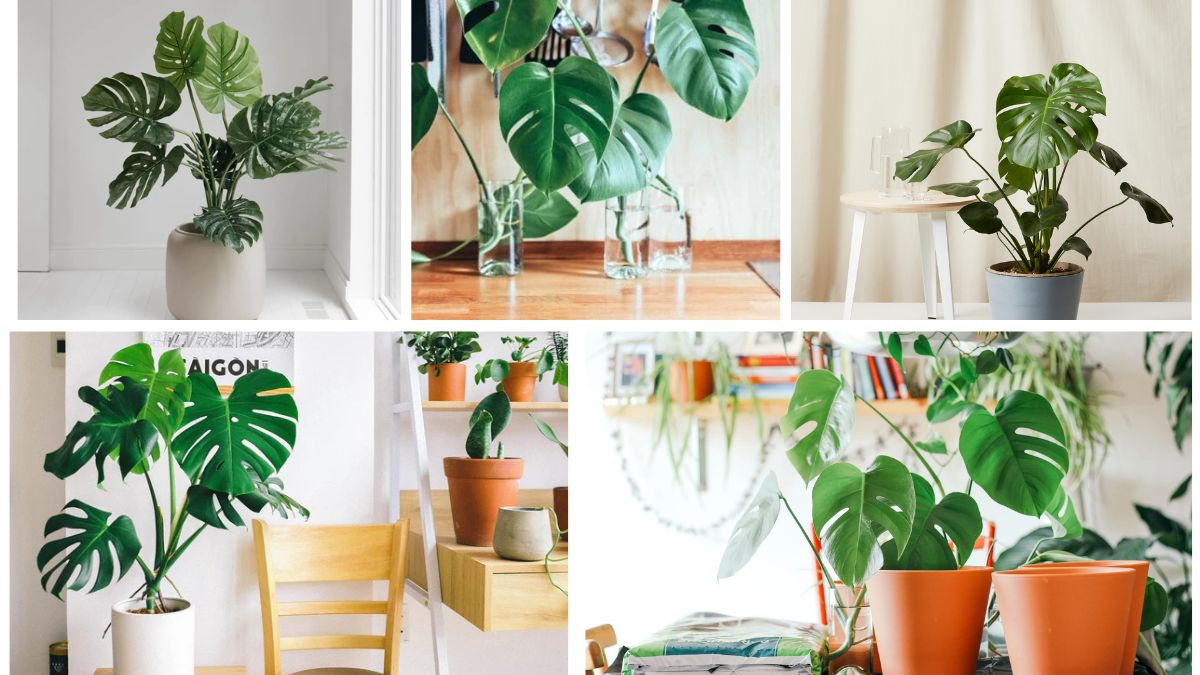Monstera plants, often recognized by their signature split leaves, are one of the most popular indoor plants worldwide. Their lush, tropical foliage not only brightens indoor spaces but also adds a sense of adventure and natural beauty to any room. Nicknamed the “Swiss Cheese Plant” because of the distinctive holes and splits in its leaves, Monstera is an ideal plant for both beginners and experienced plant enthusiasts.
This guide will walk you through everything you need to know to successfully care for your Monstera plant, from choosing the right variety to watering, light, and propagation.
Why Monstera Plants Are Perfect for Beginners
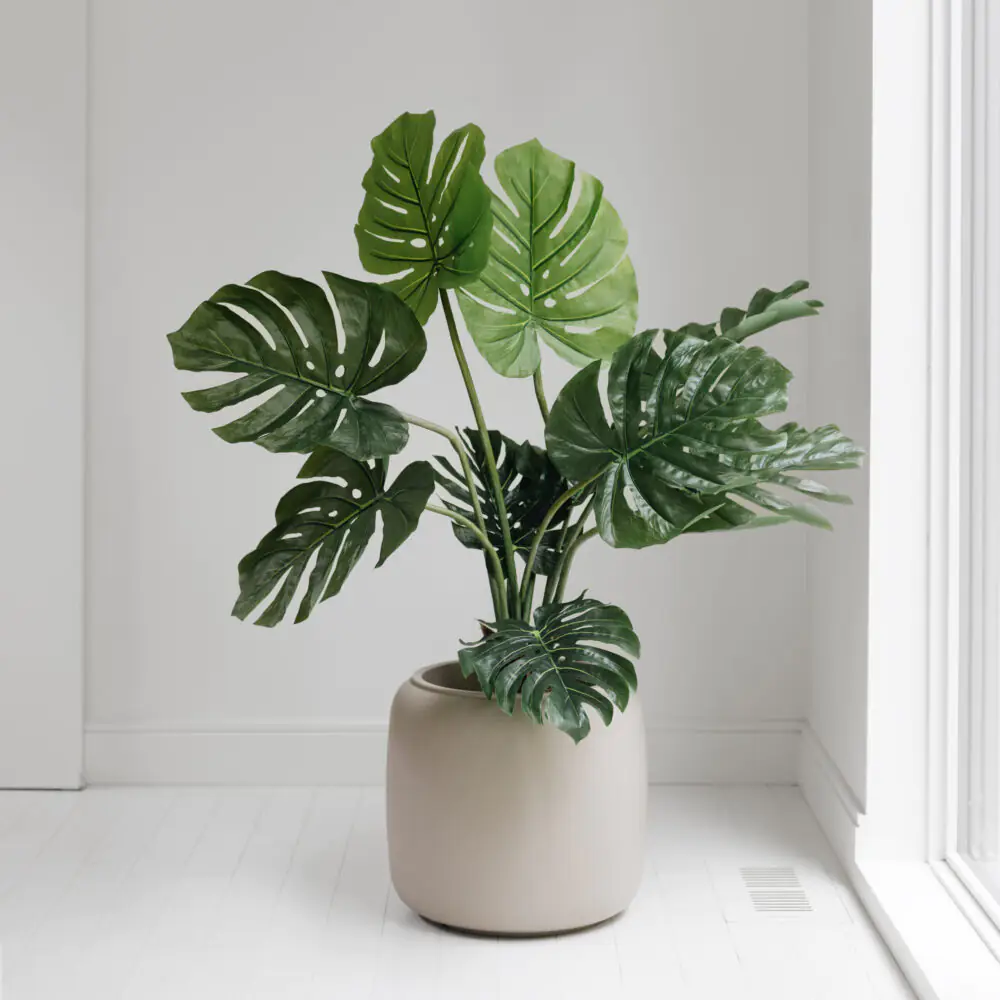
Monstera plants are low-maintenance yet visually striking, making them perfect for indoor gardening beginners. Here’s why:
- Tolerant to Various Conditions: Monstera can adapt to indirect light, making it suitable for most indoor spaces.
- Air Purifying: Like many houseplants, Monstera improves indoor air quality.
- Easy to Propagate: You can easily grow new plants from stem cuttings.
- Aesthetic Appeal: Its large, fenestrated leaves make it a stunning centerpiece in living rooms, bedrooms, or offices.
Choosing the Right Monstera Variety
There are several varieties of Monstera, and choosing the right one sets you up for success:
- Monstera deliciosa: The classic variety with large, split leaves. Ideal for medium to large indoor spaces.
- Monstera adansonii: Features smaller leaves with more holes, perfect for hanging baskets or shelves.
- Monstera obliqua: Rare and highly sought-after, with delicate fenestrated leaves. Best for collectors.
- Monstera variegata: A variegated version with white or cream patches, adding extra decorative value.
For beginners, Monstera deliciosa is highly recommended due to its hardiness and forgiving nature.
Light Requirements
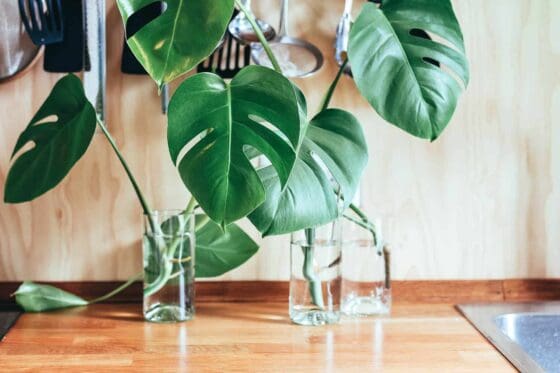
Monstera plants thrive in bright, indirect light:
- Avoid direct sunlight, which can burn the leaves.
- Too little light slows growth and reduces leaf fenestration.
- Rotate the plant occasionally to ensure even growth.
Tip: A spot near a north- or east-facing window is ideal. If natural light is limited, Monstera adapts well under fluorescent or LED grow lights.
Watering Monstera
Proper watering is key to healthy Monstera care:
- Frequency: Water when the top 1–2 inches of soil feel dry. Overwatering can lead to root rot, while under-watering causes droopy leaves.
- Technique: Water thoroughly until it drains from the bottom of the pot. Ensure the pot has a drainage hole.
- Humidity: Monsteras prefer moderate to high humidity. Mist leaves occasionally or place a humidifier nearby, especially in dry climates.
Tip: During winter months, Monstera’s water needs decrease, so adjust accordingly.
Soil and Potting
Monsteras thrive in well-draining soil:
- Best Mix: Combine potting soil, perlite, and orchid bark for aeration and drainage.
- Pot Choice: Use a container with a drainage hole to prevent waterlogging.
- Repotting: Repot every 1–2 years to give roots more space and refresh soil nutrients.
Tip: Monsteras are heavy feeders; a large, stable pot helps prevent tipping as the plant grows.
Fertilizing
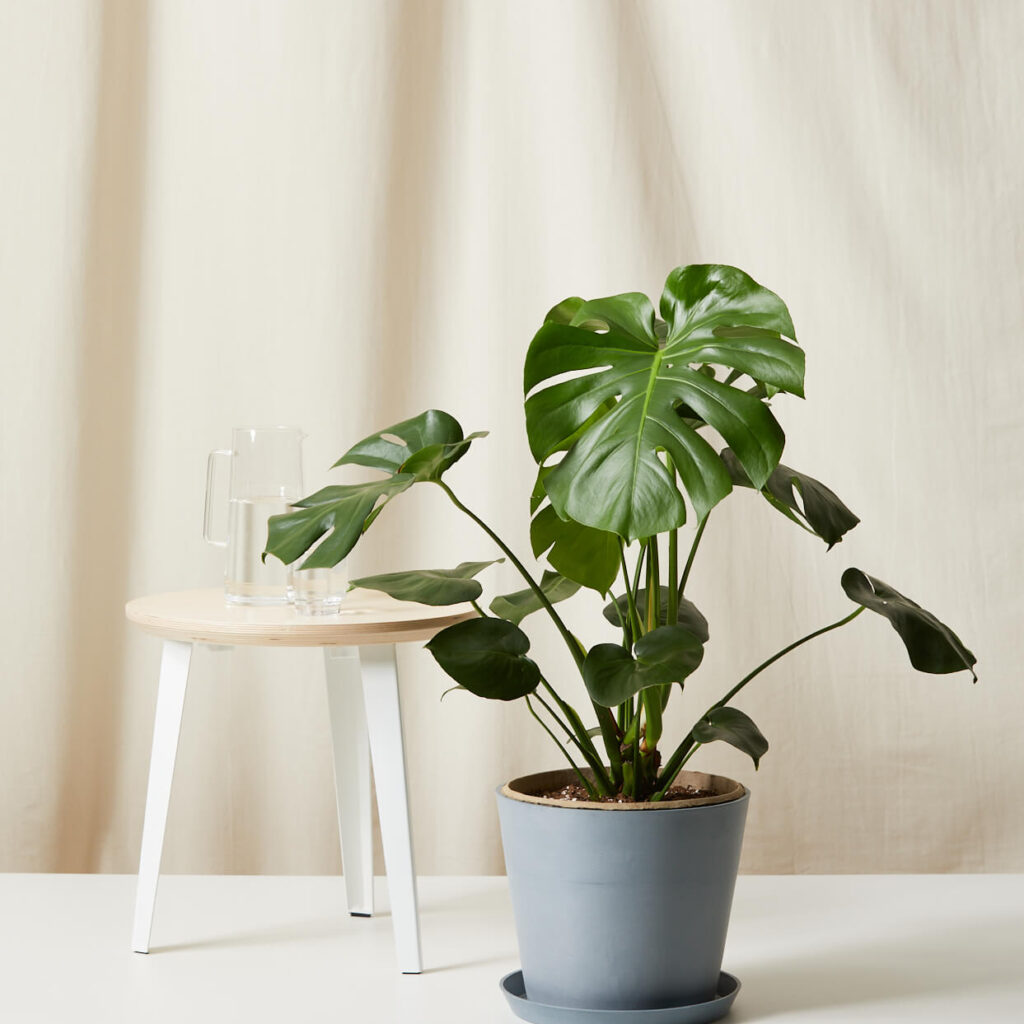
Fertilize your Monstera to encourage lush, healthy growth:
- Use a balanced liquid fertilizer every 4–6 weeks during spring and summer.
- Reduce or stop fertilizing during fall and winter when growth slows.
- Avoid over-fertilizing, as excess nutrients can burn the roots and damage foliage.
Tip: Slow-release fertilizers can also work well for consistent nutrient supply.
Supporting Growth
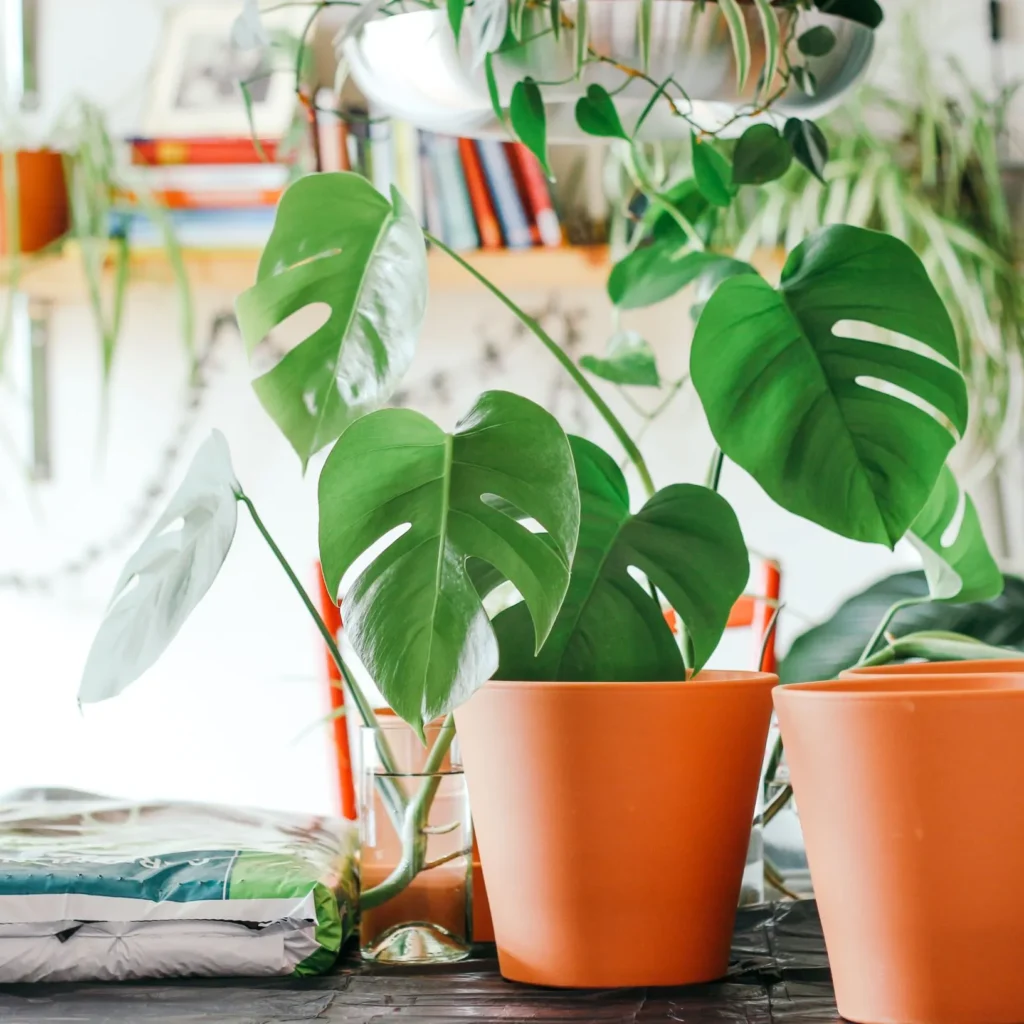
Monsteras are climbers in their natural environment, and indoor plants benefit from similar support:
- Use a moss pole, trellis, or stake to encourage upward growth.
- Gently tie stems to the support with soft plant ties.
- Regular pruning can remove yellowing or damaged leaves and promote fuller growth.
Pruning and Maintenance
Pruning keeps your Monstera healthy and attractive:
- Remove yellow, brown, or damaged leaves.
- Trim long vines if space is limited, which encourages branching.
- Use sterilized scissors to prevent infections.
Tip: You can propagate pruned stems to create new Monstera plants.
Common Problems and Solutions
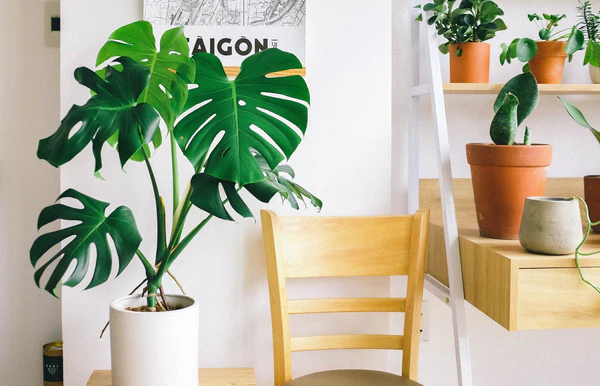
Even hardy plants can face challenges. Here’s how to handle them:
- Yellow Leaves: Often caused by overwatering or poor drainage. Check soil and adjust watering.
- Brown Leaf Edges: Usually due to low humidity or too much direct sunlight. Increase humidity or move plant away from the sun.
- Slow Growth: Could be a light issue. Ensure the plant receives enough indirect light.
- Pests: Spider mites, scale, and mealybugs can affect Monsteras. Wipe leaves with a damp cloth or use mild insecticidal soap.
Propagating Monstera
Propagation is easy and rewarding:
- Stem Cuttings: Choose a healthy stem with at least one node and a leaf.
- Water Propagation: Place the cutting in a jar of water, ensuring the node is submerged. Roots develop in 2–4 weeks.
- Soil Propagation: Plant the cutting directly in moist, well-draining soil. Keep it in indirect light and water sparingly until roots develop.
Once rooted, your new Monstera can be potted in a container or grown as part of a vertical display.
Decorating with Monstera
Monsteras are not just plants—they’re a design statement:
- Corner Accent: Place a tall Monstera in a corner to fill empty space with natural greenery.
- Tabletop Vines: Smaller Monstera adansonii can trail from shelves or tables.
- Wall Display: Use hanging planters for a tropical cascade effect.
- Mixed Plantings: Combine with ferns, pothos, or peace lilies for a lush indoor jungle.
Final Thoughts
Caring for a Monstera plant doesn’t have to be complicated. With proper light, watering, soil, and occasional pruning, even beginners can grow a healthy, thriving Swiss Cheese Plant. Its tropical charm, low-maintenance care, and air-purifying qualities make it a perfect addition to any home.
By understanding your Monstera’s needs and providing consistent care, you can enjoy its dramatic foliage for years to come. Propagate cuttings, support climbing stems, and integrate your Monstera into your interior décor, transforming your space into a lively, green oasis.
